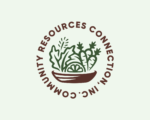Community gardens are place-based tools for connection, empowerment, and cultural identity. Today, more gardens are popping up in school yards, vacant lots, nonprofits, and housing developments. Educators are using gardens as creative and holistic tools for teaching beyond the walls of the classroom.
The New Orleans Louisiana (NOLA) Artist Incubator has done an exceptional job of promoting garden activities within her neighborhood, to include gaining citywide recognition for the garden efforts under her leadership.
The Galvez Garden is in an identified food desert in a predominantly low income, traditionally underserved community. Lack of access to fresh produce and affordability have made the neighborhood food insecure. Before the garden was able to receive the additional assistance from the USDA/Natural Resources Conservation Service and Community Resources Connection (CRC), the garden consisted of a small area to grow food. As the community began their garden efforts, vegetables from seeds and starter seedlings were all that they could afford at the time. Excluding one bountiful lettuce harvest, it was a small kitchen garden growing on average enough produce to feed one family.
Currently, the Galvez Garden not only includes enough food to share with neighbors within the community, but when you pass by the Garden one can see the addition of Mosaics, a recognized best practice for connecting youth with the natural world. Mosaics is a program that incorporates science with cultural and generational traditions. The premise of this program is that the gardeners represent a mosaic of cultures and the plants that they harvest become the mosaic. The four core values of the Mosaics program are science, people, cultures, and actions. As an educator, Lissie Stewart, noted she now has the tools to engage students in garden-based learning through storytelling, science, project-based learning, and civic engagement.
In 2023 the Galvez Garden area was completely transformed and has tripled in size, which has increased the number of families that can benefit from its harvest. Before the transformation, the garden beds were constructed out of recycled materials that had been damaged by rot and termites. The funds awarded were used to replace damaged infrastructure and to add ten new high quality raised garden beds. One of the raised garden beds is a large U-shaped bed used specifically as a teaching garden, currently growing watermelon. In the teaching garden bed, an Olla Watering System was installed using 61% less water than drip line irrigation to demonstrate traditional and alternative water saving methods. A Trellis system was also installed in two of the larger beds and native perennial grapes were planted in the area. The use of worm composting bins was implemented in the larger beds to aid in adding nutrients organically to the soil and again to serve as a demonstration garden, highlighting the importance of vermiculture and sustainable practices in urban farming.
Also, Galvez Garden joined the ranks of becoming a registered USDA People Garden by meeting the following criteria:
- Benefit the community by providing food, green space, wildlife habitat, education space.
- Are a collaborative effort. This can include groups working together with USDA agencies, food banks, after school programs, Girl Scouts, Master Gardeners, conservation districts, etc.
- Incorporate conservation management practices, such as using native plant species, rain barrels, integrated pest management, xeriscaping.
- Educate the public about sustainable gardening practices and the importance of local, diverse, and resilient food systems providing healthy food for the community.
Shawn Robins, CRC President, congratulation the NOLA Artist Incubator along with the local garden supporters on the success of the Galvez Garden. “It is this type of community collaborations and leadership that contributes to the success and longevity of garden programs.”

